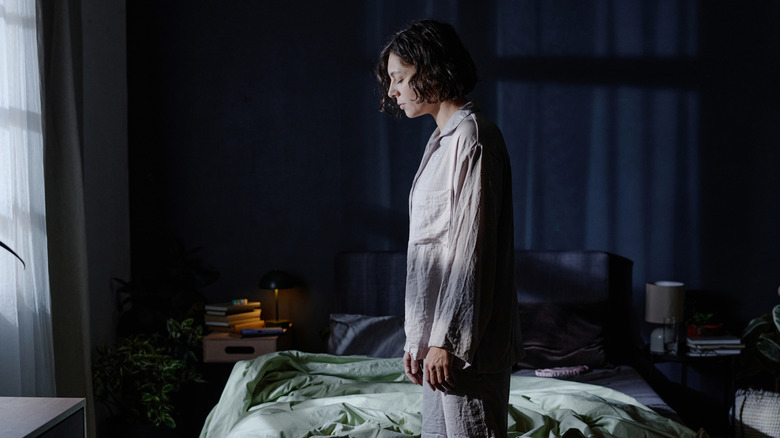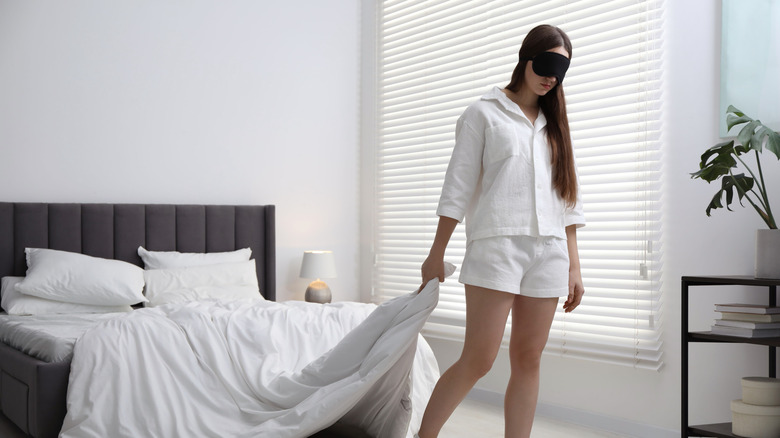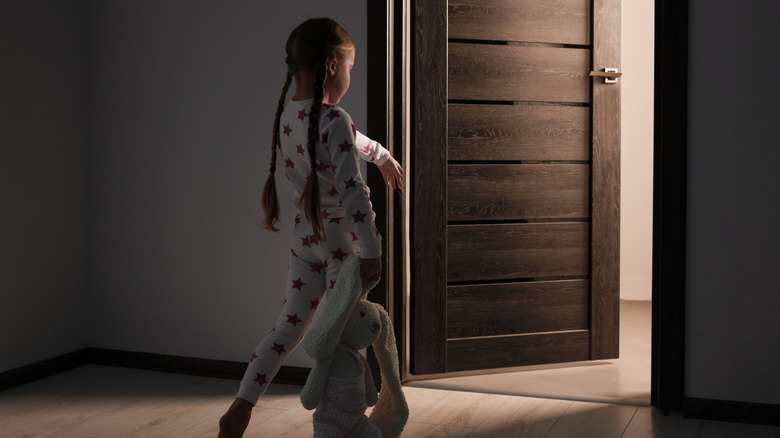What Really Happens When You Wake Up A Sleepwalker
When you fall asleep each night, your body goes into restore mode, repairing tissues and balancing your immune system. Your brain is also pretty active, clearing out waste while consolidating episodes in your memory. However, for about 1% of adults and up to 15% of children, the motor cortex of the brain will become active and cause them to sleepwalk.
Seeing someone sleepwalking can be confusing. Their eyes may be open as they move around. They may also talk, but they don't respond to you. You could try to wake them up, but it may be difficult. According to the University of Arkansas for Medical Sciences, waking up a sleepwalker won't cause a heart attack or trauma; but, because the sleepwalker is in a deep stage of sleep, waking them up abruptly may make them agitated. Rather than trying to wake up a sleepwalker, it's better to lead the sleepwalker back to bed to avoid encountering a harmful situation, such as leaving the safe space of the bedroom.
What is sleepwalking?
One of the misconceptions of sleepwalking is that the person walks like a zombie with their arms extended in front of them. A sleepwalker may seem to be awake, doing something routine like getting dressed or eating, though they may seem clumsier than usual. Some sleepwalkers may try to drive or climb out a window. You may not know the person is sleepwalking, but the sleepwalker won't remember the event the next morning.
(Here are some strange things you may do while you're asleep.)
Sleepwalking is considered to be a sleep disorder, grouped with similar sleep disorders such as sleep talking and sleep terrors, according to the Sleep Foundation. Sleepwalking usually occurs within the first few hours of sleep during the non-REM deep sleep cycle. For some people, sleepwalking is genetic, while others may sleepwalk if they're deprived of sleep, under stress, or have a brain injury. Alcohol, some medications, or other sleep disorders such as sleep apnea could also bring about sleepwalking.
How sleepwalking is treated
Sleepwalking is more common among children, and their sleepwalking may become less frequent as they enter adolescence. If the sleepwalking episodes aren't frequent occurrences, the Sleep Foundation says sleepwalking doesn't need treatment. The best way to handle sleepwalking is to mitigate harm to the sleepwalker and others in the household by locking away sharp objects, latching doors, keeping windows closed, and eliminating anything on the floor that could cause a stumble.
You may need to see a doctor about sleepwalking if the disruptions in sleep cause drowsiness during the day or disturb others in the household. Treating sleepwalking depends on the cause. Sleepwalkers who are sleep-deprived or under stress may need therapy or medication to manage stress and improve sleep. If you find that your antidepressant or sleep medication causes you to sleepwalk, your doctor may need to adjust your dosage or switch your medications. It also helps to practice good sleep hygiene and avoid alcohol near bedtime.



